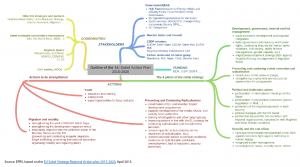More than a new policy, the strategy seeks to bring together existing resources and operational tools. At the European External Action Service (EEAS), a Sahel Task Force coordinates the work of the various relevant geographical and thematic EEAS departments and of the European Commission Directorates-General for International Cooperation and Development (DG DEVCO), Humanitarian Aid (DG ECHO) and Migration and Home Affairs (DG HOME); the EU Counter-Terrorism Coordinator is also a member of this task force. An EU Special Representative, Angel Losada, is responsible for coordinating the EU comprehensive action in the Sahel in liaison with the EU delegations, missions and the regional authorities.
Multi-channel funding
The EU Strategy for the Sahel is funded by multiple financial instruments:
1. The European Development Fund, outside the EU budget, benefits the signatories of the EU-ACP Partnership Agreement (among them the G5 countries). The Commission has proposed to integrate this funding into the EU budget in the next multiannual financial framework (2021-2027).
2. Funds from the EU budget:
• the Humanitarian Aid Instrument;
• the Instrument contributing to Stability and Peace (IcSP) for crisis management and long-term stabilisation measures.
3. Assistance from the Emergency Trust Fund for Africa (EUTF Africa) established in 2015 to address the main causes of migration and to provide support to migrants who have been denied asylum by the EU; EUTF Africa is a pool of resources from the EU and a number of Member States.
4. The Africa Investment Platform (AIP, formerly Africa Investment Facility), a blending mechanism that uses EU grants to leverage other public or private resources. The AIP is part of the European Fund for Sustainable Development.








Be the first to write a comment.